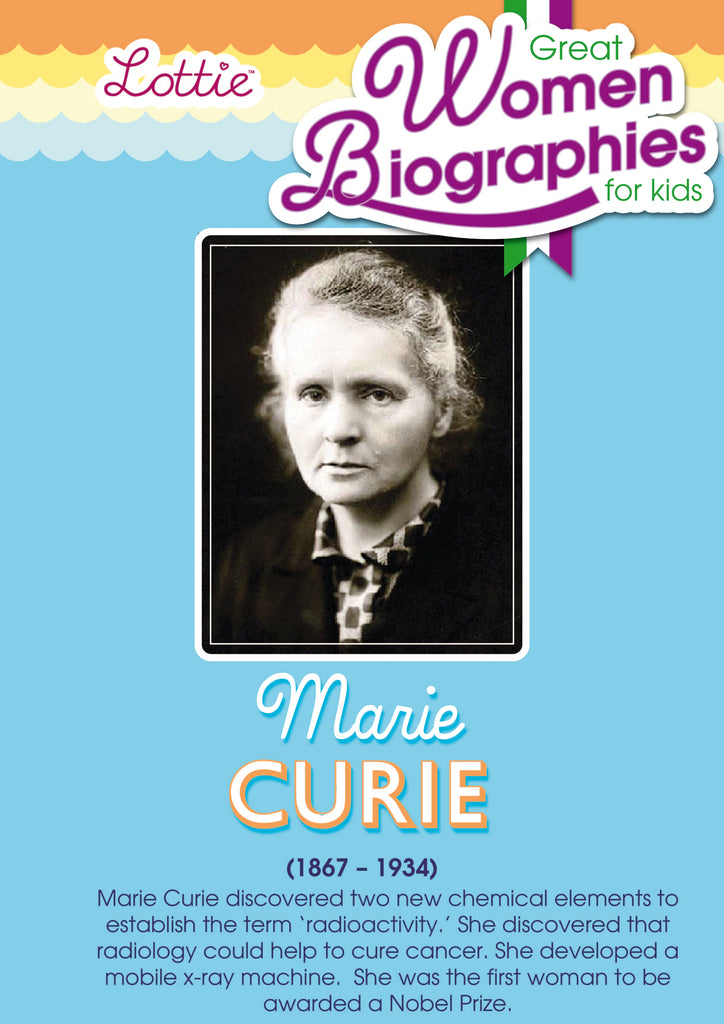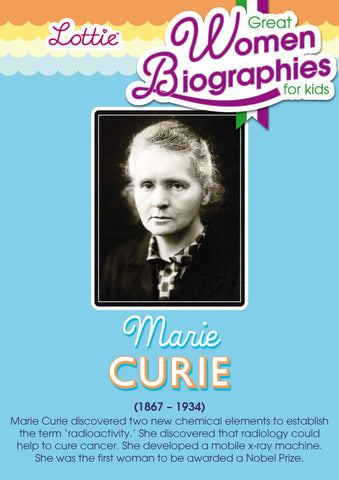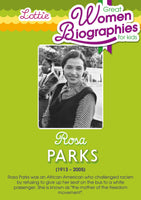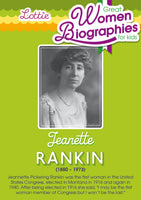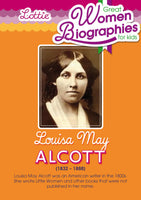In 1911 Marie was awarded the Nobel Prize in Chemistry for the discovery ofthese elements. She was the first person to be awarded two Nobel prizes - a great achievement especially for a woman at the time.Tragedy Overcome
Marie faced tragedy in 1906 when her husband Pierre was killed after being knocked down by a horse and cart.
Despite this difficult time however, Marie remained even more dedicated to her scientific research and followed her husband’s dreams of expanding thelaboratory.
Her further research led her to discover that radiation could kill human cells. Marie reasoned that the same radiation must be able to kill unhealthy cells too – without this discovery we wouldn’t have many of our modern cancer treatments.
After Pierre’s death, Marie took over his professor post at the University of Paris. Shewas the first woman to ever teach there.
Marie And The First World War
During the First World War, Marie worked hard on the front line to support troops in battle. Along with her 17-year-old daughter Irene, Marie developed a mobile x-ray machine, which were called ‘Petites Curies’ (Little Curies). This machine meant that bullets and pieces of metal could be located inside the bodies of injured soldiers.
Marie also trained 150 other women to use the x-ray machines. This important piece of equipment helped over 1 million soldiers.
After the war Marie founded the Radium Institute to raise money for research into radioactivity. She spent some time in America on a tour to raise funds for the institute.
Curie in a mobile X-ray vehicle
The First Lady Of Science
Marie died from Leukemia in 1934. This was caused by exposure to radiation over many years. The damaging effects of radiation exposure had not been known at the time. When scientists handle radioactive material today they have to wear special protective suits.
After Marie’s death, her work still remained very important. In recognition of hercommitment to science, she was the first woman to be laid to rest under the domeof the Pantheon in Paris. Marie had to overcome many barriers due to her position as a woman but she remained dedicated to her work and was a great role model for other young female scientists. Her daughter Irene followed in her mothers’ footsteps and later went on to be awarded the Nobel Prize in chemistry.
![]() Fast Shipping*
Fast Shipping*![]() Subscribe to our Newsletter
Subscribe to our Newsletter![]() 🌟 A Walk in the Park Lottie Doll 🌟
🌟 A Walk in the Park Lottie Doll 🌟